How to grow beans at home: a step-by-step guide
Beans - a plant unique... It can be used both as a main course and as a side dish. Beans are canned and added to salads. The calorie content of beans is about 90 kcal per 100 g, in green beans (asparagus) - only 23 kcal for the same amount. The culture contains vitamins B and C, rich in keratin and zinc.
To grow beans, it is not necessary to have your own land plot. Let's consider further how to plant beans at home and what is needed for this.
The content of the article
Is it possible to create conditions at home for growing beans
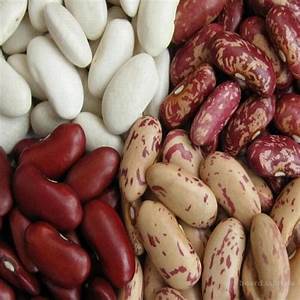
This is real. To do this, you need to purchase small containers - these can be pots, boxes, or plastic boxes.
You can grow a culture on a windowsill or balcony. Bean flowers are self-pollinating, that is, they do not need artificial pollination.
Since the root system of the vegetable is small, one bean bush will fit perfectly in one flower pot. Let's consider in detail how to grow beans at home.
Choosing the best varieties for growing
Asparagus beans are best suited for growing at home.
The earliest of them:
- Caramel... The first crop appears already 55 days after planting. The height of the bush varies from forty to 60 cm. The pods and seeds have a juicy and pleasant taste. Caramel is an unpretentious variety. Care consists in the usual activities - timely watering, loosening the soil.
- Shahinya... The fruits of this variety are highly prized in cooking. After cooking, the beans become tender, retaining their shape and taste. The taste is sweet and pleasant. The variety is perfect for canning and freezing. Also, the plant is resistant to many diseases.
- Backyard beans are early maturing varieties. Bushes reach a maximum height of 0.5 m, do not need support. The variety loves nutritious soil, so it is better to periodically feed the plant. For long-term storage of fruits, it is recommended to freeze them.
- Oil king... The fruits are in the form of tubes, tender. Large pods are removed approximately 2 months after sowing. The product can be used both fresh and after heat treatment. The variety is easy to grow.
- Sachs 615... It is characterized by small bushes that will look beautiful on your windowsill. The fruits are tasty, without coarse fibers. The variety does not need support and garters.
Important! If this is your first time growing beans at home, we advise you to buy several varieties at once and sow several seeds each. This way you will understand which beans are best for you.
What do you need
Get the seeds first. Familiarize yourself with the characteristics of the variety you are interested in in advance, choose the most suitable one.
Beans grow quickly, do not require picks, so it is better to plant them immediately in pots of suitable size. Each bush will require 3 to 5 kg of soil. You can plant a culture both in a common box and in individual containers. You can buy them at any home improvement store.
Important! Bushes should not interfere with each other, otherwise the yield will decrease.
Planting beans and further care of plants
Let's consider in detail the process of planting and caring for the crop.
Soil preparation for beans
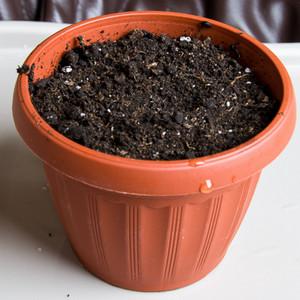
For planting, both a universal soil for vegetables from a store and self-prepared soil are suitable for you.
To prepare it on your own, take one part of humus, one part of sod land, and also (for one bucket of such a mixture) a glass of wood ash.
Make drainage holes - pour expanded clay about 3 cm thick on the bottom of the pot. The use of acidic soil is unacceptable.
Sowing time when growing on a windowsill and balcony
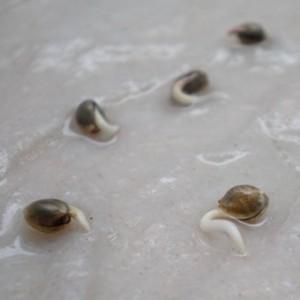
Soak the seeds for cultivation follows in February. It is usually still cold on the balcony and windowsill at this time, so it is better to plant the plant in May.
Beans are afraid of frost and cold, so it's better not to rush, wait for warm weather.
Seed preparation and sowing
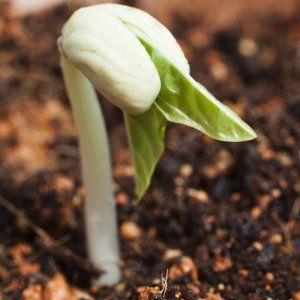
To prepare seeds for sowing, follow the following procedure:
- soak them for a day in water at room temperature;
- wrap the seeds in a damp cloth and place in a warm place to germinate;
- check them daily for sprouts;
- as soon as they appear, immediately start sowing. Do not tighten - roots cannot be allowed to germinate;
- to stimulate growth, you can add "Energen" or "Zircon".
Important! If you decide to plant several varieties of beans at once, remember that their seeds do not germinate at the same time. Do not wait for everyone to germinate at once, plant each germinated seed in your individual container.
After the seeds sprout, you need to do the following:
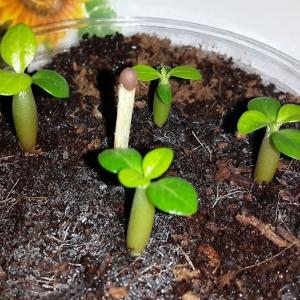
- pour the soil into the container so that about 5 cm remains to the edges;
- water the soil abundantly;
- spread out the sprouted seeds - if this is a box, then the distance between the seeds should be at least 25 cm;
- pour earth 3-4 cm thick on top, slightly compact it;
- keep in a warm place until shoots appear - you can cover the beans with foil, because the plant is thermophilic.
Features of caring for beans
Water the beans as the soil dries out. Focus on the weather - on hot days, give the plant more moisture. If in the open field the beans can take the necessary moisture and nutrients from other plants, then in indoor conditions everything depends only on your watering.
Top dressing begins after the first leaves appear. Pay attention to nitrogen fertilizers - they are especially beneficial. Also periodically sprinkle humus on the plant and mix it with the soil.
When buds appear, fertilize with potassium dressings with the addition of trace elements. Ash is ideal. Sprinkle soil on it, water and stir.
Important! The special attention of gardeners was attracted by the fertilizer called "Horse dung extract". This substance is odorless and therefore suitable for home use. This natural fertilizer nourishes the plant and saturates it with vitamins.
If the bushes are unstable, you can always tie them up with pegs. If you are growing on an open loggia, protect it from rain. Otherwise, water will stagnate in the tanks.
The plant does not like darkening, so pay special attention to the light mode. The boxes are placed on the light side of the windowsill or balcony. If the sun is not enough, create artificial lighting with a lamp.
Harvesting the first harvest
Ripe pods are immediately used for cooking. Fruits (beans) are picked only after they are fully ripe. They should be collected 2 weeks after the end of flowering.
Do not delay harvesting. The sooner you rip it, the faster the next batch will ripen.
Cold weather is a common cause of late harvests. Growing beans at home cannot be called a large-scale production, but a dozen bushes will bring you fruits both for freezing and for fresh consumption.
Diseases and pests
 Even if you provide a vegetable with all the necessary conditions for growing at home, this does not mean that it will not be affected by infections and parasites.If you have houseplants at home, aphids and spider mites can spread to the bean bushes.
Even if you provide a vegetable with all the necessary conditions for growing at home, this does not mean that it will not be affected by infections and parasites.If you have houseplants at home, aphids and spider mites can spread to the bean bushes.
There is also a bean weevil - this is a beetle that is omnivorous in relation to all legumes. It is better to fight these insects with the help of biological preparations or by freezing dry seeds (in this case, they must be placed in the freezer for two days).
Important! The culture is susceptible to bacteriosis, so you should take care of the plant's immunity during flowering - spray the beans with special preparations. You can buy them at any garden store.
Asparagus beans: planting and care features
Asparagus varieties are among the most popular. The method of growing them at home is not much different from the standard one. At home, it grows much faster than in the garden. You can plant it at the end of December, the first shoots will appear in a couple of days. And in mid-February, flowers already appear.
reference... Beans are a self-pollinating plant, so the appearance of pods will not keep you waiting long either. Asparagus varieties are less demanding on light than bush varieties.
The pods of asparagus beans are tender, without coarse fibers. They can be added to soups, salads, side dishes. The fruits are harvested when the pods have not yet formed and the grains are green. If you grow such beans on the balcony, then you can occasionally feed them with manure. About 3 kg of asparagus culture is harvested from one square meter.
Conclusion
If you don't have your own garden, and you really want to grow something useful and tasty, think about planting beans. The vegetable contains useful elements and vitamins, and does not require special knowledge and skills to care. A window sill, balcony or loggia is suitable for placement. Prepare a container for seedlings in advance, and also choose the variety that suits you.
The plant is unpretentious in care, the main thing is to observe the watering regime and carry out feeding. The fruits have a pleasant taste, they are eaten fresh and frozen for the winter. Fast and rich home harvests!